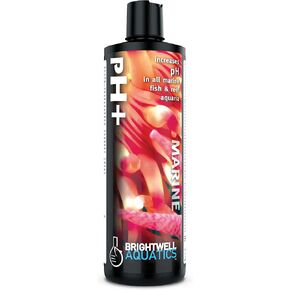- Shopping, made easy.
- /
- Get the app!
Photosynthesis is carried out within cell bodies known as Chloroplasts. Iron is utilized in the electron transport chain within the chloroplasts, and is therefore required by photosynthetic organisms for continued functioning and health. In marine aquariums, these organisms include macroalgae, marsh grasses and mangroves, encrusting calcareous algae, and the symbiotic zooxanthellae and zoochlorellae that reside within the tissues of hermatypic corals, clams, and their allies. The availability of iron becomes a limiting factor in the rate of photosynthesis, and hence the rate of nutrient uptake and growth, for these organisms. While each aquarium will require different concentrations of iron, a good place to begin is within a range of 0. 05 - 0. 10 ppm; this will generally provide sufficient iron for the photosynthetic organisms present in the system. Some aquaria may require, or benefit from, iron concentrations greater than 0. 10 ppm, however greatly exceeding this level is not recommended. The best method of determining the optimal iron concentration for an aquarium is to begin at 0. 05 ppm and then gradually (i. e. over a period of weeks) increase the concentration as warranted by the appearance of the aquarium. Phosphate is a substance that encourages growth of algae under the environmental conditions commonly found in marine aquaria, and overdosing iron in the presence of excessive phosphate may result in algal proliferation; for this reason, the concentration of phosphate in a marine aquarium should be maintained as close to immeasurable as possible. The rate at which iron is extracted from the water is determined by the stocking density of photosynthetic organisms, type of lighting, and other conditions. Once the rate of iron uptake in the aquarium has been determined, the proper dosing rate of this product can be easily calculated.


 Blackwater - Water Conditioner with Humic Substances for All Planted & Blackwater Biotope Aquariums, 2L
KWD 3
Blackwater - Water Conditioner with Humic Substances for All Planted & Blackwater Biotope Aquariums, 2L
KWD 3
 Brightwell Aquatics Shrimp FlorinGro + - Fertilizer and Planted Nitrogen Source for Accelerated Plant Growth in Freshwater Fish Aquariums, 125 ml
KWD 3.500
Brightwell Aquatics Shrimp FlorinGro + - Fertilizer and Planted Nitrogen Source for Accelerated Plant Growth in Freshwater Fish Aquariums, 125 ml
KWD 3.500
 Brightwell Aquatics pH+, pH Increaser for All Marine and Freshwater Aquariums - 2 Liter
KWD 3
Brightwell Aquatics pH+, pH Increaser for All Marine and Freshwater Aquariums - 2 Liter
KWD 3
 Brightwell Aquatics - Xport-BIO Block Aquarium Filter - Biological Filtration Media for Bacteria Growth, Nutrient Control & Control of Unwanted Nutrients - Aquarium Water Treatments, 4 Pack, 1.5 inch
KWD 10.500
Brightwell Aquatics - Xport-BIO Block Aquarium Filter - Biological Filtration Media for Bacteria Growth, Nutrient Control & Control of Unwanted Nutrients - Aquarium Water Treatments, 4 Pack, 1.5 inch
KWD 10.500